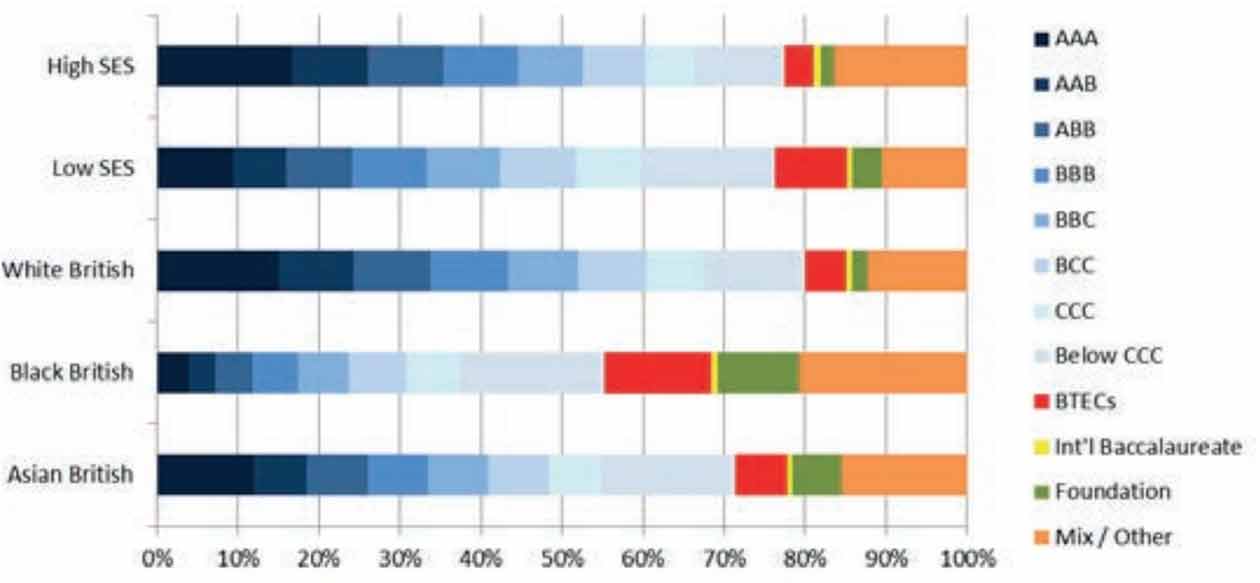Introduction
There are large gaps in outcomes at universities in the UK by socio-economic background (SES) and ethnicity. Over the past ten years, on average a Black British student has been 10%pts less likely to complete an undergraduate degree at the first attempt, and if they do complete it, 22%pts less likely to get at least an Upper Second class degree than a White British student. A student with a parent in a professional or intermediate occupation (High SES) is 7 and 9%pts more likely than one who does not (Low SES) respectively.
We analysed 167,000 students’ records; a 10 per cent random extract of the population of Home students starting undergraduate degrees at UK universities between 2007 and 2014; to understand what other characteristics (such as age or disabilities) or choices (of prior qualifications, degree subject, or final year modules) of these students help explain these gaps.
Main findings
- The gap by which High SES students outperform Low SES students was almost entirely accounted for by prior performance and A-Level subject choices. For privately versus state-educated pupils, the direction of the gap was even reversed: given all their advantages privately schooled pupils are doing less well than expected at university.
- The gaps between Black or Asian and White British students’ outcomes remain almost unchanged after accounting for their other characteristics and choices. This is because both groups carry advantages and disadvantages that offset each other.
- Asian students A-Level subject choices are heavily skewed towards STEM subjects such as Maths, Physics and Chemistry, which prepare them especially well for university. However, Asian British students are then highly overrepresented in fields of study such as pharmacy and pharmacology, clinical medicine, and IT and computer sciences, which all see relatively high dropout rates.
- Mature students, who are more likely to get higher degree classes, are highly overrepresented among Black British students (24%) relative to the rest of the student population (9%).
- Ethnic minority and Low SES students are more likely to arrive at university having studied BTECs or a mix of qualifications rather than A-levels (Figure 1).
- Holding everything else constant, students who had studied BTECs were 10-20 percentage points less likely to complete a degree at the first attempt than those with ‘equivalent’ A-Level grades.

Authors’ main message
BTECs play an important role in widening participation at university, particularly for Black students.
Our results suggest these qualifications develop different skills to A-Levels, which the majority of university courses are still built around. Universities could do more to recognise these differences and support students transitioning from vocational to academic study. Schools have a role to play in providing information, advice and guidance to pupils about the paths that taking A-Levels (and strong performance in specific GCSE and A-Level subjects) will open or make easier.
MiSoC/HE18/E02 © MiSoC September 2018
DOI: 10.5526/8d62-rf85
